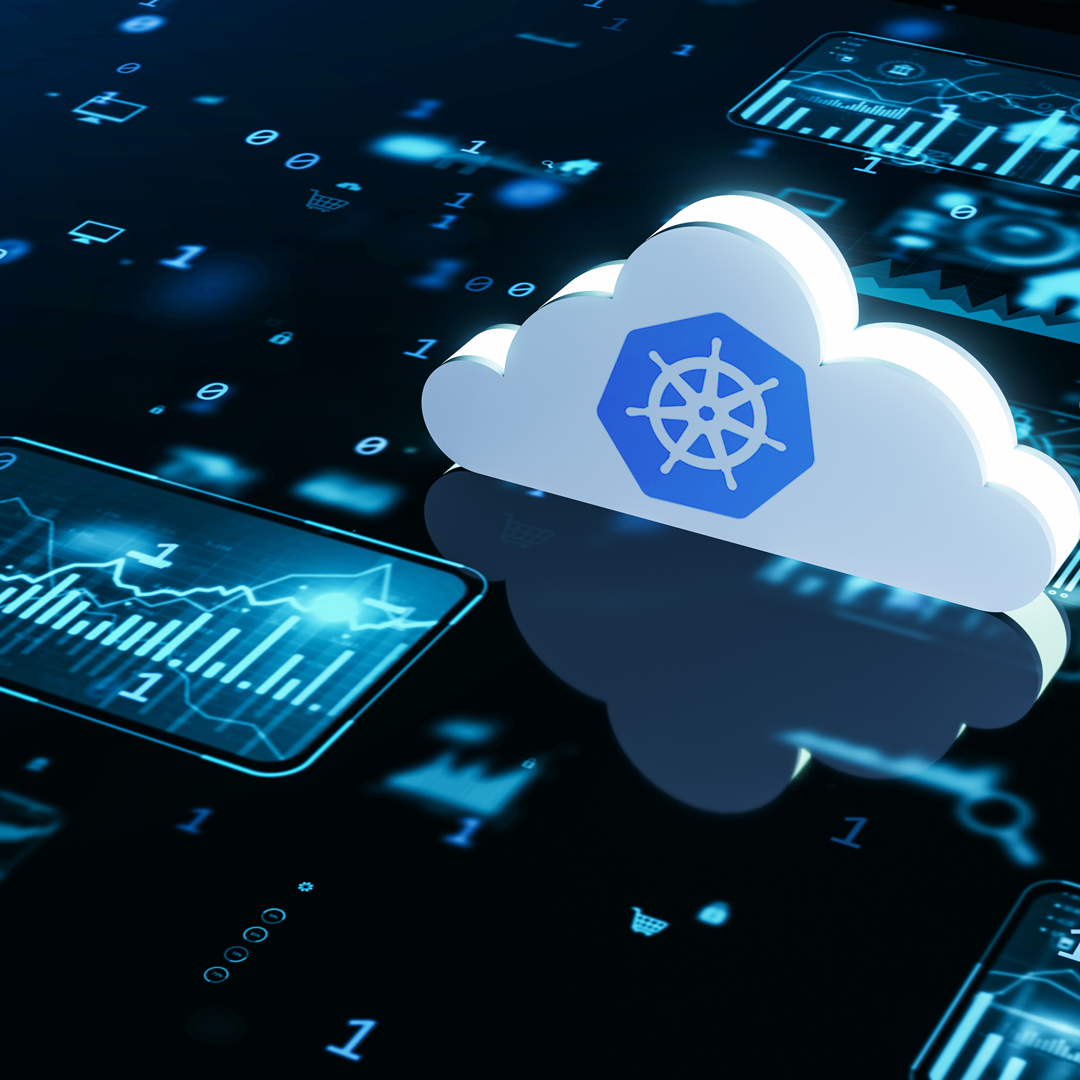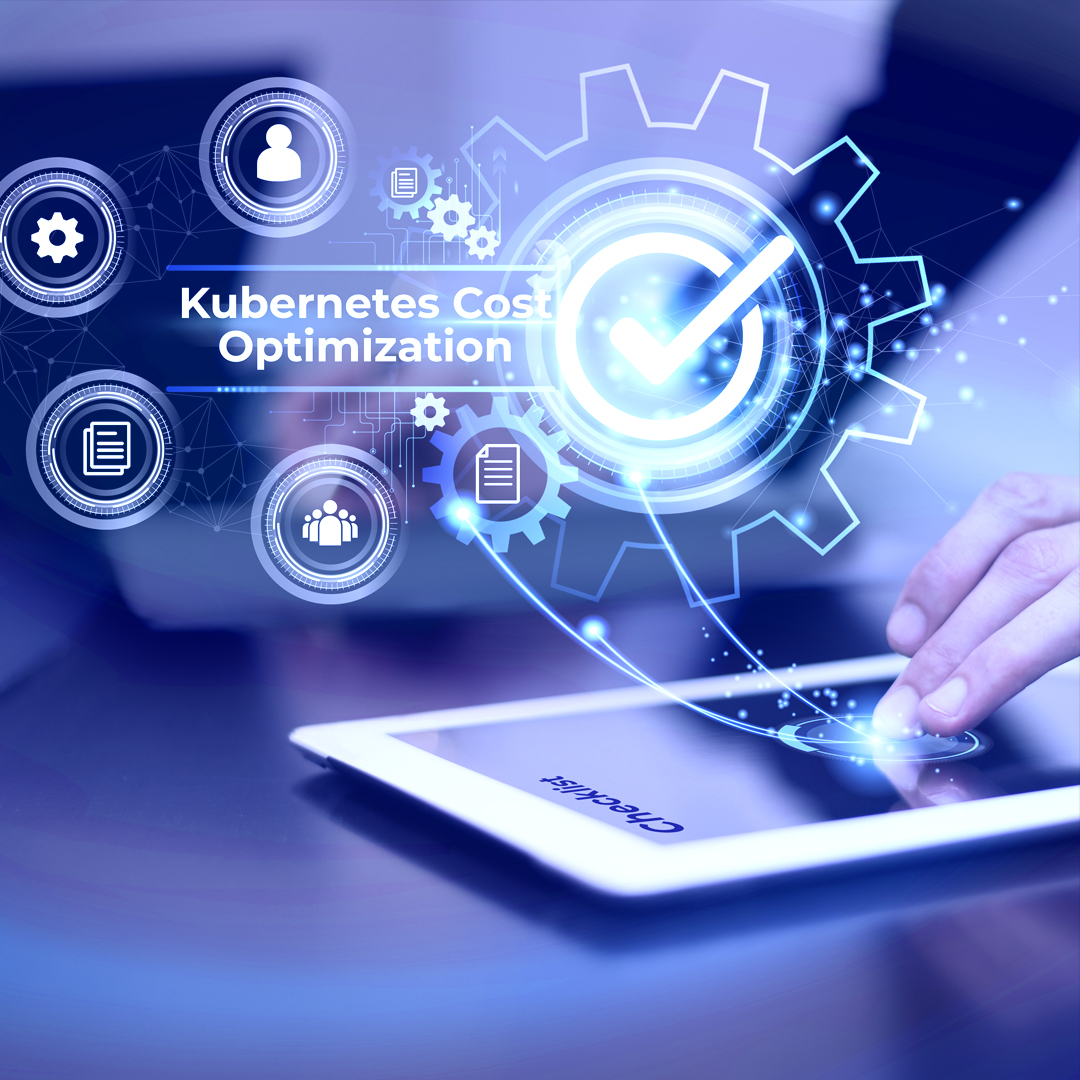Recent industry research shows that 64% of cloud-native organizations face DevOps bottlenecks that are increasing lead times for changes—directly impacting their ability to scale, meet market demands, and accelerate time-to-market. This trend is hardly surprising when you consider the rising complexity of modern DevOps in cloud-native environments, where speed, security, and scalability must coexist in every release cycle.
DevOps, once synonymous with continuous integration and continuous delivery (CI/CD) pipelines, has undergone a profound metamorphosis. It is no longer just about managing CI/CD pipelines. It’s evolved into a comprehensive approach that includes platform thinking and automation at an enterprise scale.
For CTOs navigating this transformation, the challenge is clear: yesterday’s DevOps playbook won’t deliver tomorrow’s results. Understanding and adapting to this evolution is paramount. This guide aims to help technology leaders modernize their DevOps strategy to support sustainable growth and engineering velocity in today’s cloud-native environments.
Why traditional DevOps approaches are failing at scale
As organizations mature in their cloud journey, many discover that the DevOps practices that worked for smaller teams or simpler architectures begin to break down.
Several key challenges emerge:
Siloed ownership of infrastructure and tooling
In many organizations, infrastructure management and the selection and maintenance of DevOps tools remain the responsibility of a central DevOps team. This creates an inherent bottleneck as development teams become reliant on the DevOps team for provisioning, configuration, and troubleshooting, hindering their autonomy and slowing down the entire delivery pipeline. As demand increases, this team becomes overwhelmed, leading to delayed deployments and frustrated development teams.
One-size-fits-all CI/CD systems that break down in hybrid/multi-cloud setups
Traditional CI/CD pipelines are often designed with a specific infrastructure in mind. As organizations embrace hybrid or multi-cloud strategies to leverage the best-of-breed services and avoid vendor lock-in, these monolithic systems struggle to adapt. Different services in different cloud environments may require different deployment approaches, making standardization difficult and increasing complexity. Managing such deployments becomes a complex and error-prone task.
Hiring constraints and the burnout of internal platform teams
Building and retaining a highly skilled in-house DevOps team is a significant challenge. The demand for expertise in areas like Kubernetes, containerization, infrastructure-as-code, and security automation far exceeds the supply. This often leads to overburdened internal platform teams stretched thin, struggling to keep up with the demands of multiple development teams, and ultimately facing burnout.
Security and compliance challenges when delivery is fragmented
When DevOps practices are inconsistent across different teams and projects, maintaining robust security and compliance becomes a nightmare. Fragmented tooling and processes create blind spots and increase the risk of vulnerabilities. Traditional security approaches are ill-suited for the dynamic and distributed nature of cloud-native environments. Thus a more integrated and automated approach is required.
What DevOps really means in a cloud-native world
In the cloud-native era, DevOps transcends the limitations of traditional interpretations. It’s a holistic philosophy that is spread across the entire software development lifecycle, driven by key shifts in mindset and practice.
From pipelines to platforms
- Internal Developer Platforms (IDPs): The most significant shift in modern DevOps thinking is the move from simply building CI/CD pipelines to creating comprehensive Internal Developer Platforms (IDPs). These platforms abstract away the underlying infrastructure complexities, providing development teams with self-service capabilities for provisioning resources, deploying applications, and monitoring their performance while maintaining governance.
- Platform engineering vs DevOps: Platform engineering is the discipline of designing and building IDP toolchains and workflows. Unlike traditional DevOps, which often focuses on individual project needs, platform engineering takes a product-centric approach, building reusable and scalable internal services that cater to the common needs of multiple development teams. This shift is crucial for CTOs as it enables them to build a foundation for sustainable and scalable growth of the entire organization rather than continuously expanding the DevOps team.
From tooling to culture and process
- DevOps as a collaboration framework across teams: Many organizations made the mistake of viewing DevOps solely as a set of tools rather than what it truly is i.e a collaboration framework across engineering teams. While tooling remains an important aspect of DevOps, the modern interpretation emphasizes culture and process transformation. DevOps is not just about implementing a set of tools, it’s about fostering a collaborative environment where development, operations, and security teams work together seamlessly throughout the entire software lifecycle.
- The shift from DevOps team to DevOps embedded in every team: This cultural shift requires leadership from the CTO level to break down silos between development and operations, creating shared ownership models where product teams take responsibility for the full lifecycle of their services. The notion of a dedicated DevOps team is evolving towards a model where DevOps principles and practices are embedded within every team, empowering developers to own the entire lifecycle of their applications.
From reactive to automated
- GitOps, Infrastructure as Code (IaC), and policy automation: Mature cloud-native organizations are moving beyond reactive troubleshooting to proactive automation. GitOps approaches ensure that infrastructure and application configurations are version controlled and automatically synchronized. Infrastructure as Code (IaC) and policy automation prevent drift and reduce the risk of configuration-related outages.
- Observability and automated rollbacks: Observability consists of metrics, logs, and traces, providing real-time insights into system performance and health. This enables proactive identification and resolution of issues. Coupled with automated rollbacks, this significantly reduces Mean Time To Recovery (MTTR) and minimizes the impact of failures, reducing reliance on manual intervention during critical incidents.
Key pillars of a modern DevOps strategy for CTOs
To effectively navigate the complexities of cloud-native environments and unlock engineering velocity, CTOs should focus on building a DevOps strategy grounded in these key pillars:
1. Platform engineering and internal self-service
- Abstracting infrastructure complexity: The goal is to shield development teams from the intricacies of the underlying cloud infrastructure. IDPs provide a simplified and consistent interface for developers to consume infrastructure and services without needing deep expertise in each specific technology. This doesn’t mean they shouldn’t understand what’s happening underneath but they shouldn’t have to become a domain export in everything just to deploy a simple service.
- Tooling: Tools like Backstage enable building developer portals with self-service workflows. Crossplane extends Kubernetes to manage multi-cloud resources. Terraform modules and Kubernetes operators provide reusable building blocks for infrastructure and application deployments. These platform capabilities transform the developer experience from “open a ticket and wait” to “self-serve what you need when you need it.”
2. Cloud-native automation at scale
- Multi-cloud and container-native CI/CD: Implementing CI/CD pipelines that are agnostic to the underlying cloud provider and optimized for containerized applications (using Docker and Kubernetes) is crucial for flexibility and scalability.
- Event-driven delivery: Automating workflows based on events, such as code commits or container registry updates, can further accelerate the delivery process.
- Testing automation: Integrating comprehensive testing at every stage of the pipeline, from unit tests to integration and end-to-end tests, ensures code quality and reduces the risk of production issues.
- Security baked into workflows: Automating security scans and vulnerability assessments within the CI/CD pipeline (“shift-left security”) ensures that security is an integral part of the development process, not an afterthought.
3. Integrated security and compliance
- Shift-left security practices: Empowering developers with the tools and knowledge to identify and address security vulnerabilities early in the development lifecycle.
- Policy-as-Code: Defining and enforcing security and compliance policies as code, ensuring consistency and auditability across the environment.
- Image scanning and secret management: Automating the scanning of container images for vulnerabilities and implementing secure and centralized secret management solutions are essential for protecting sensitive data.
4. Visibility, cost control, and performance metrics
- Real-time observability: Implementing robust observability tools like Prometheus for metrics and Grafana for visualization provides real-time insights into application performance and infrastructure health.
- Connecting DevOps to FinOps: Integrating DevOps practices with FinOps (Cloud Financial Operations) to gain visibility into the cost implications of deployments and optimize cloud spending. Understanding the cost impact per deployment allows for more informed decision-making.
- DORA metrics and engineering KPIs: Tracking key metrics like deployment frequency, lead time for changes, time to restore service, and change failure rate (the DORA metrics) provides valuable insights into the effectiveness of DevOps practices and helps identify areas for improvement. CTOs should also track broader engineering KPIs related to velocity and quality.
Rethinking DevOps talent: build, hire, or partner?
Building and maintaining a high-performing DevOps team in-house can be a significant hurdle. The scarcity of skilled professionals and the constant evolution of the cloud-native landscape necessitate a strategic approach to talent acquisition and development.
Challenges of building a full in-house DevOps team
The cost of hiring and retaining experienced DevOps engineers who have the expertise to manage things at scale can be substantial. Moreover, keeping the team’s skills up-to-date with the latest technologies and best practices requires ongoing investment in training and development.
The risk of overburdening engineering teams with infra ownership
Many companies make the mistake of overburdening existing engineering teams with infrastructure ownership on top of product development responsibilities. This approach typically leads to context-switching, reduced velocity, decreased productivity and ultimately burnout.
Strategic roles for DevOps as a service
Engaging with a DevOps as a Service provider can offer a strategic advantage by bridging skill gaps, accelerating time-to-value, and providing access to specialized expertise without the overhead of building a large in-house team. A well-chosen partner like Naviteq that has specialists who bring deep platform engineering expertise can bring proven methodologies, best-of-breed tooling knowledge, and hands-on support to augment your internal capabilities.
The key takeaway is that you don’t need a big team, you need the right team, at the right time. A hybrid approach, combining a core internal team with strategic partnerships, can often be the most effective and efficient way to achieve your DevOps goals.
How Naviteq supports cloud-native DevOps transformation
At Naviteq, we’ve built our DevOps as a Service model specifically to address the challenges faced by cloud-native organizations. Our DevOps as a Service model is designed to provide embedded expertise and drive platform-driven delivery, empowering your teams to achieve greater velocity and resilience.
Our DevOps as a Service model
We don’t just offer consulting, we become an extension of your team, embedding experienced DevOps engineers who work collaboratively with your development and operations teams. Our approach is rooted in building robust internal developer platforms that enable self-service and automation. Our team-backed model gives you access to deep expertise across multiple disciplines without the overhead of building that capability internally.
Areas we help with:
- CI/CD pipeline optimization: Designing and implementing efficient and scalable CI/CD pipelines that support multi-cloud and container-native deployments.
- Kubernetes management: Providing expertise in managing and operating Kubernetes clusters, ensuring scalability, security, and reliability.
- Infrastructure as Code (IaC): Implementing IaC using tools like Terraform to automate infrastructure provisioning and management.
- FinOps visibility: Helping you gain visibility into your cloud costs and implement FinOps practices to optimize spending.
- GitOps tooling: Implementing GitOps workflows for declarative infrastructure and application management.
Why our team-backed model gives you deep expertise with startup agility
Our team comprises seasoned DevOps professionals with deep expertise across a wide range of cloud-native technologies. We bring a wealth of experience and best practices, combined with the agility and responsiveness you expect from a partner who understands the fast-paced nature of startups and growing organizations.
Case-in-point: accelerating DevOps maturity without slowing innovation
We’ve helped numerous clients accelerate their DevOps maturity by implementing platform engineering principles and automating key processes, all while ensuring that the pace of innovation remains unhindered. By abstracting away infrastructure complexities and empowering development teams with self-service capabilities, we enable them to focus on delivering value faster and more efficiently.
Final thoughts – reframe DevOps to unlock engineering velocity
CTOs today are not just technology leaders, they are architects of speed, scale, and resilience. The organizations that thrive will be those that evolve their DevOps approach beyond tools and processes to create platforms that empower developers while maintaining operational excellence. The key is not simply deploying more DevOps tools or hiring more DevOps engineers. It’s about adopting a smarter, more automated, and deeply embedded approach to DevOps, often through the strategic integration of an embedded DevOps team.
Key takeaways
- Prioritize platform thinking: Invest in building internal developer platforms that abstract complexity and empower self-service.
- Automate for scale: Embrace automation across the entire software lifecycle, from infrastructure provisioning to deployments and security.
- Use metrics that tie DevOps to business impact: Track key metrics like DORA metrics and connect DevOps initiatives to tangible business outcomes like faster time-to-market and improved reliability.
- Don’t go it alone—strategic partners accelerate transformation: Consider leveraging the expertise of DevOps as a Service provider to bridge skill gaps and accelerate your transformation journey.
By reframing DevOps as a strategic capability rather than a tactical function, CTOs can position their organizations to deliver software faster, more reliably, and with greater business impact in today’s cloud-native world.
Ready to redefine your DevOps strategy for the cloud-native era?
Contact Naviteq today for a consultation and discover how our DevOps as a Service model can empower your engineering teams and accelerate your business growth. Let’s architect your future of speed, scale, and resilience together.
Frequently Asked Questions
What is cloud-native DevOps?
Cloud-native DevOps is the evolution of traditional DevOps practices tailored for modern, containerized, and microservices-based architectures. It emphasizes automation, platform engineering, self-service infrastructure, and embedded DevOps principles across teams. Rather than centralized teams managing pipelines, cloud-native DevOps empowers developers to own the full lifecycle of their applications using internal developer platforms (IDPs), GitOps workflows, and Infrastructure as Code (IaC).
What is the difference between traditional DevOps and cloud-native DevOps?
Traditional DevOps often centers on centralized CI/CD pipelines and ops teams supporting devs. Cloud-native DevOps embeds DevOps practices across teams, favors internal developer platforms (IDPs), and automates everything from deployments to security using GitOps, IaC, and policy-as-code. It’s more scalable and aligned with modern cloud environments.
What is platform engineering, and how does it relate to DevOps?
Platform engineering focuses on building self-service platforms (IDPs) that abstract infrastructure complexity for developers. While DevOps emphasizes collaboration and automation, platform engineering creates reusable systems that empower dev teams to deploy and manage services independently, at scale.
What is an internal developer platform (IDP)?
An internal developer platform (IDP) is a self-service system built by platform teams to help developers deploy, test, and monitor applications without needing deep infrastructure knowledge. It streamlines workflows, enforces consistency, and removes DevOps bottlenecks in cloud-native environments.
Why are traditional DevOps teams becoming a bottleneck?
Centralized DevOps teams can’t scale fast enough to support multiple development teams in complex cloud-native environments. They often become a bottleneck for provisioning, deployments, and troubleshooting. Embedding DevOps expertise across teams and adopting self-service platforms helps solve this.
How does DevOps as a Service help cloud-native companies?
DevOps as a Service gives companies access to experienced DevOps professionals who can design scalable platforms, implement automation, and support CI/CD, Kubernetes, and FinOps practices—without having to build and retain a full in-house team. It reduces hiring pressure and accelerates delivery.
What is the role of GitOps in modern DevOps strategies?
GitOps uses Git as the single source of truth for infrastructure and application configuration. It enables automated, version-controlled deployments and rollbacks. GitOps is essential in modern cloud-native DevOps for improving consistency, auditability, and velocity.
How can CTOs measure the success of their DevOps strategy?
CTOs should use metrics like the DORA framework—deployment frequency, lead time for changes, change failure rate, and time to restore service. They should also monitor engineering velocity, team satisfaction, cost efficiency, and how quickly teams can ship features or recover from failures.
Why embed DevOps in every team instead of centralizing it?
Embedding DevOps into every team enables faster decision-making, greater ownership, and quicker iterations. It avoids handoffs, reduces dependency on a single team, and fosters a culture of accountability and collaboration across development and operations.
How does FinOps tie into DevOps strategy?
FinOps brings financial accountability to cloud-native operations. Integrating FinOps with DevOps helps teams understand the cost impact of their deployments, optimize resource usage, and make informed trade-offs between speed and spend.






